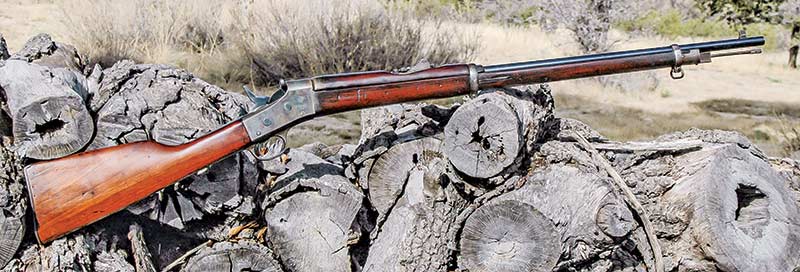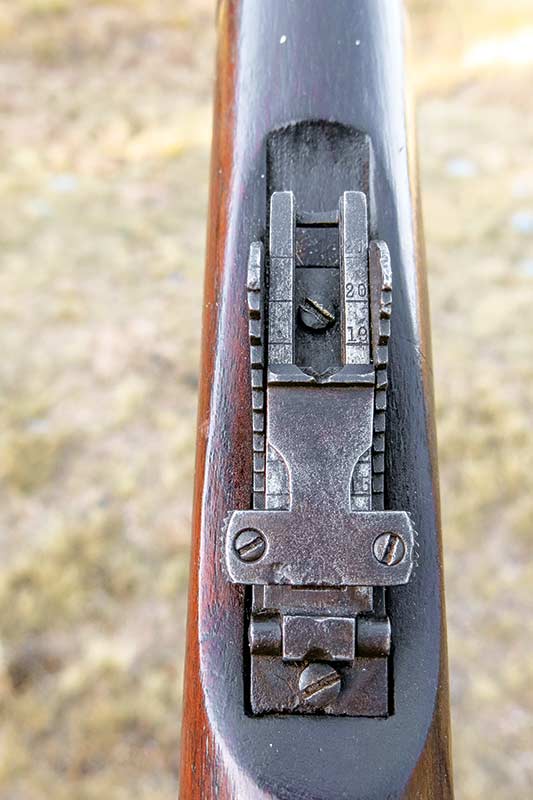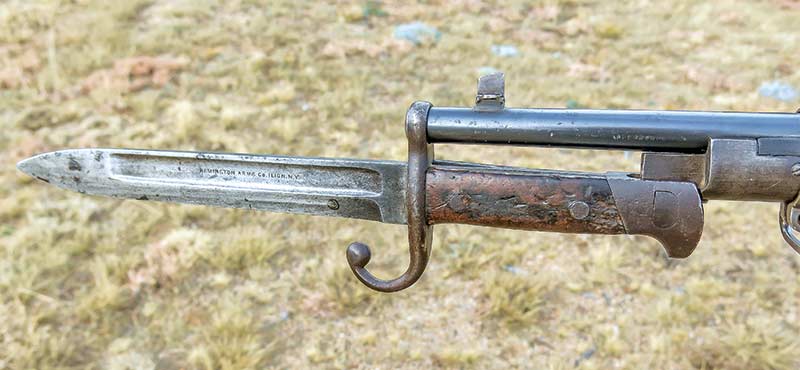Rock-Bottom Rolling Block
The good old days: Milsurp classics at fire-sale prices
Splashed across the pages and back covers of gun magazines of the 1950s and ’60s were the world’s greatest milsurp treasures from importers like Hunters Lodge, Winfield Arms Corp. and World Armament Supply Co.
It was a surplus feeding frenzy, with wood-cased Enfield No. 4 MK1 scoped sniper rifles priced at $79, Lugers for $48, BSA Martinis for $16.95, Johnson semi-autos for $68.50, and jillions of Mausers from around the world for about $30 each. If your taste ran to more heavy-duty toys, there were fully operational 20mm Finnish Lahti anti-tank rifles for $99.95, M1934 25mm Hotchkiss howitzers for $125 and Soviet M1938 60mm mortars for $19.95.
Potent And Priced Right!
Way at the bottom of the pile were Remington Model No. 5/1902 Rolling Block rifles and carbines in 7×57 for as little as $9.95. I had found the G-rated object of my teenage desires!
Penning a carefully thought out letter to the Winfield Arms Corp. in Los Angeles, CA, in which I assured them I would be buying another Model No. 5 if the first one came through in excellent condition, I sealed the promise with a postal money order for $9.95 (plus $1.50 for an original Remington bayonet). I then waited breathlessly for it to arrive via Railway Express, shipping charges collect.
Two weeks later, I was tearing apart a cardboard carton to see if my ploy had worked. It had. The Remington was, for all practical purposes, mint. The bayonet, however, looked like it had gone through the Mexican Revolution.
Searching Out 7x57
With rifle in hand, it finally dawned on this giddy teenager I needed some ammunition. Winfield had also offered 60 rounds of 175-gr. FMJ military 7×57 for $4.50, but it was almost half the price of the rifle so I’d passed it up. There is a price to be paid for being cheap. Now I had a fine rifle but no ammo.
These were the days when there were no “gun shops.” Rifles, shotguns, handguns and ammunition were only to be found at your local hardware store or maybe the local Sears Roebuck or Montgomery Ward outlet. Lacking a chain outlet in my area, I headed to the local hardware store.
Rural hardware stores were a sight to behold. They seemed to stock everything you needed, and if not, they could find it. My area of the store was the gun rack and a wall of wooden pull-out drawers where the .22 rimfire ammunition was stored. On the other hand, shotshells and centerfire ammunition were displayed on open shelves behind the front counter — where I was headed. I asked for a box of 7×57.
Much to my surprise, Henry, the sales chief, dug around and came up with a green box of Remington 175-gr. soft points. He said it was the only box of 7×57 he had, and he didn’t know why he even had it. He was curious what I was going to use it in. Anyway, I was in business, but the sticker price was almost what I’d paid for the rifle — a lesson learned.
One-half box of “factory” loads was consumed with getting to know my new rifle. The other half was saved for the fall deer season where it proved a 175 SP was heap big medicine on our local whitetails.
A Teachable Moment
The 10 empties I now owned cried out to be reloaded. I owned no dies, no press, but having successfully fashioned glass marble loads for my .58 caliber Springfield musket and reloaded shotgun shells with rudimentary hand tools and Du Pont Bulk Smokeless Shotgun powder, I was full of teenage confidence.
Somewhere I’d read a reloader was rolling his cast bullets between two pieces of heavy, plate glass to size them. The light bulb went on for me! What if I could make some .28 caliber bullets by rolling — yes, rolling — OO buckshot pellets between two pieces of glass. Two pieces of plate glass were found, a 12-ga. OO shotshell was broken down, and I was in business.
I started rolling and rolling. Slowly the round buckshot became a cylinder and when it would just fit in the neck of the empty case, I gave it a coat of beeswax and hand-seated it over 1/3 of a case full of Du Pont Bulk Shotgun powder. I ran out the door and went hunting without even trying it out on a target.
My backyard prey was a crow perched high in our oak tree (he could be laughing still). I have no idea where the bullet went, but then I did set up a target to check things and realized the utter folly of my inspired loading.
Which brings up a point. Should you be so lucky to own a Model No. 5 in 7×57, it features a steel action for the pressures generated by a 173 to 174-gr. FMJ military loading at 2,300 fps. No more! Current factory hunting ammo is too hot for it (chambers run from 0.006 to 0.013″ longer than SAAMI maximum specifications). Fired brass in the Model No. 5/1902 will typically show signs of excessive stretching unless it is fire-formed first.
The solution? Look at the 7×57 loading data in Hodgdon’s 2019 manual. There are plenty of recipes for starting loads generating 2,300 fps at pressures as low as 35,000-40,000 CUP. Those are the ones to use, or go to cast bullets for lighter loadings yet.
There’s a simple elegance to the Remington Rolling Block, and in milsurp circles there are a jillion of them out there. Remington made 46,450 No. 5s alone between 1901-1910. No, you can’t buy them on sale for $9.95 anymore but they’re still a smokin’ bargain in the world of quality single shots.








